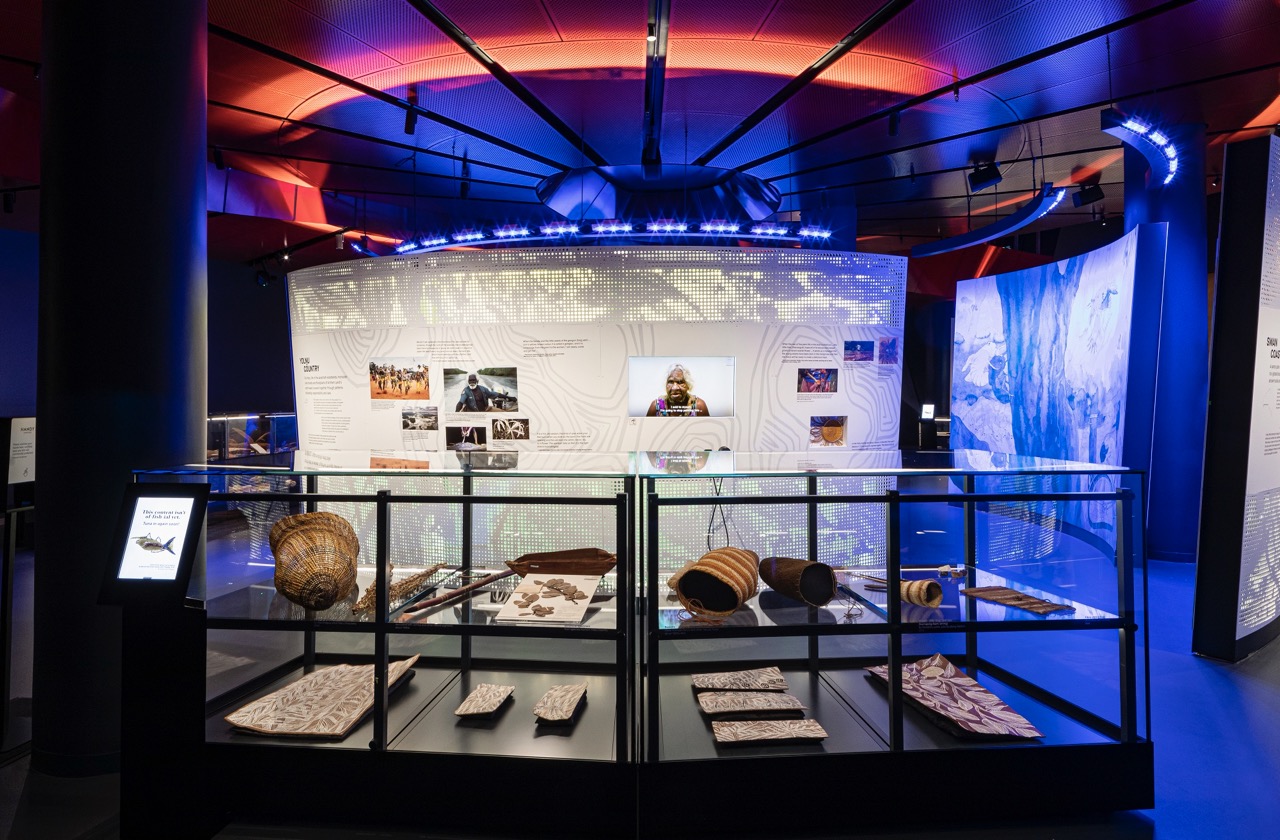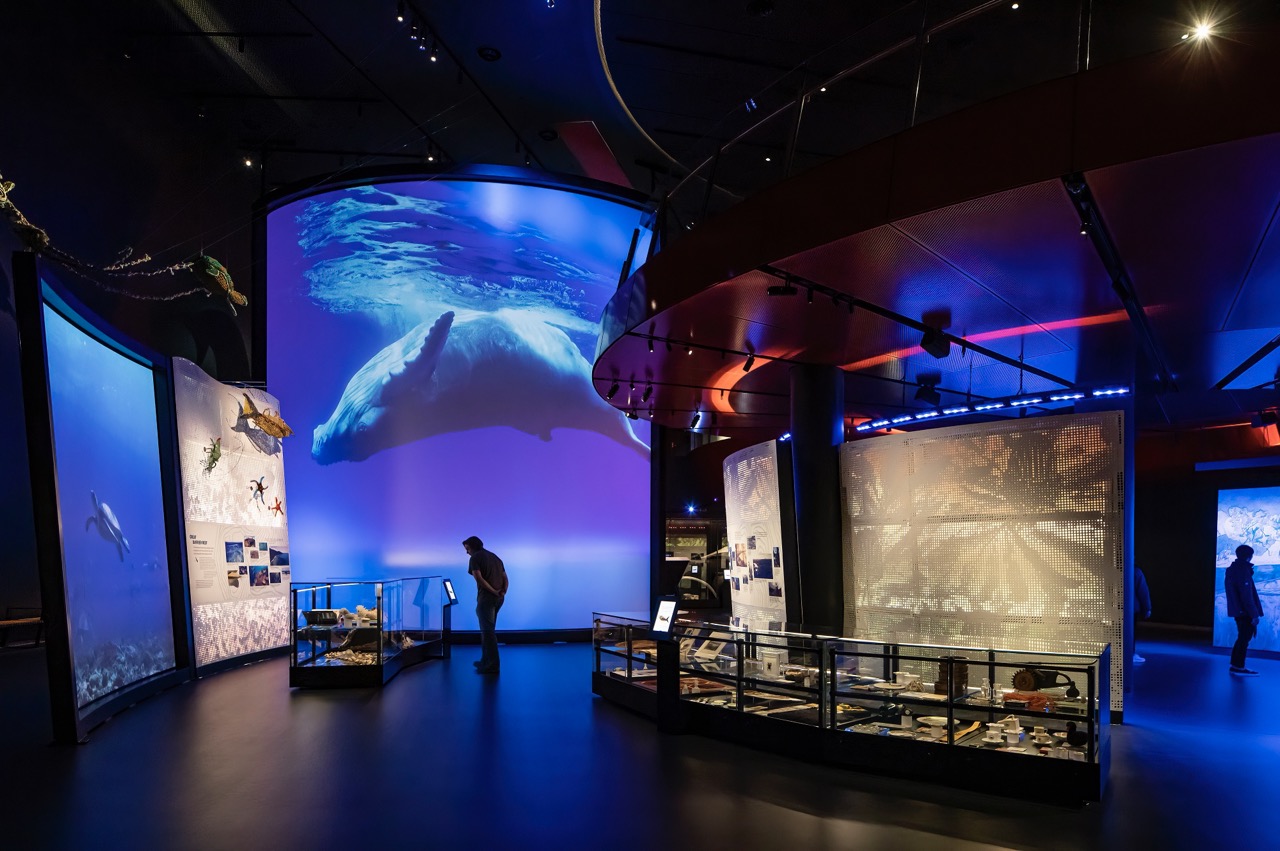Come listen to the Land

A river twists like a bright blue serpent through a wild tangle of forest. Rolling mountains of cloud rumble over the land to the sea. Birds squawk, waterfalls boom, locusts thrum.
When you stop and listen, you can hear the sounds of the Great Southern Land.
The National Museum of Australia celebrates and explores the Australian landscape with a magnificent new gallery that shares the stories the land has to tell through powerful media, compelling objects, innovative digital interaction and striking design elements.
The environmental history gallery explores our fundamental relationship to the land, over time incorporating stories of First Nations Peoples who have lived on the continent for at least 65,000 years and the stories of those who followed.
Newly opened in September 2022, Great Southern Land was designed by Local Projects, best known for their acclaimed work on the National September 11 Memorial and Museum in New York. The Gallery is part of a multi-million dollar project that revitalises and reimagines the way Australian stories can be told.
Travel through time
Great Southern Land is an enriching experience, presenting more than 2000 objects, lavish and thoughtful digital elements and multi-sensory experiences that will captivate visitors.
Each of these elements delve deep into our connection with the land. The journey takes us back in time, beginning with the immense forest of bunya pines cast from living trees in Queensland and looks at the natural forces that have shaped our continent, and the people on it.
Of vital importance, the gallery also shows how our land has changed, and how listening to our land’s stories, its heartbeat, can help us respond to global environmental challenges.
Power, Connection, Life and Change
The gallery is organised around four major themes: ‘Power’ reveals the forces that have moulded and shaped our land over millennia. The power of water, wind and fire. A phone box, its roof melted into long, twisted strands, is a reminder of the inferno that roared through the tiny town of Cobargo, taking lives, houses and vast swathes of land with it. Yet it is also a message about community, and how the town came together by trusting, talking and doing.
‘Connection’ draws our attention to our seasons, impacted by the rains, wind, scorching heat and swirling dust that coats everything in its path. These systems and seasons drive migrations, stimulate growth and we adjust our lives accordingly. Spectacular life-sized orca models hang from the ceiling, with incredible footage of whales swimming in the ocean. Connections between animals, place and people is explored through the story of the orca ‘Old Tom’, the Yuin people and whalers in Eden on the NSW south-coast.
‘Life’ looks at plants, animals and humans from the Red Centre to the grasslands of Tasmania, from Arnhem Land to Swan Coastal Plain. It explores our biodiversity, with dramatic footage of Lake Eyre and the Great Barrier Reef demonstrating how plants and animals adapt to living in such different places.
‘Change’ is perhaps one of the most impactful sections of the gallery, focusing on how human actions have disrupted the rhythms of our land, the habitats of animals, and impacted the severity of the seasons. But, it gives hope, showing how drawing on the wisdom of the land, we can navigate future changes.
At the end of the gallery, Places That Matter, an engaging interactive map allows visitors to search for places important to them. It’s a fitting way for visitors to connect, tell their stories, and be part of this groundbreaking gallery.
There’s a place where you can take your time to hear these stories; to listen to the land. There you’ll discover the most wonderful tales of power, connection, life, and change. And when you do, you can’t help but be left in awe.
This article is brought to you by the National Museum of Australia.













